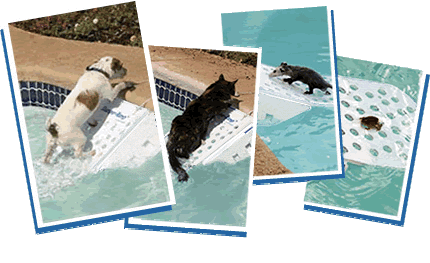Play Therapy - The Cure For Playful Aggression
We can take the cat out of the jungle, but we can't take the jungle out of the cat. There is a little tiger in every house cat, a solitary predator, that needs to exercise its hunting skills on a regular basis. We may have confined this little tiger within four walls, provided it with the finest of feline foods, but we can't ignore its basic need to do that for which it was so perfectly designed--to hunt. Fortunately, it is not always necessary for the prey to be alive, but it must move.
Owners are often frightened by playfully aggressive cats and kittens because they look quite dangerous. They silently ambush feet and ankles as they pass by, surprising, upsetting, and sometimes, even hurting, the victim. In some cases the cat owners have inadvertently trained their cat to be a feline terrorist by playing with it as a kitten with their hands or feet. Now that the pet is bigger and stronger, those playful pounces and bites puncture the skin. The solution is to direct the cat's playful, predatory, energies toward toys instead of body parts.
Of course, the easiest solution, and perhaps the best, is to get another cat or kitten of the same sex* and approximately the same age and activity level as a playmate for your pet. Although you will now have two mouths to feed, the wear and tear on you and your home will be greatly reduced, or eliminated. If getting another pet is not possible, then it will be your responsibility to provide your fractious feline with scheduled sessions of controlled aerobic exercise, ie. play therapy.
Interactive Play
Schedule two or three (more, if necessary) interactive play sessions a day for times when Kitty is most rambunctious. (Cats love routine, so try not to deviate from these times.) Depending on how athletic Kitty is, the sessions may last 10-20 minutes each. A fishing pole-type toy enables the pet owner to be stationary while controlling the cat's activity level with a wave of the arm. (Some of the best commercially sold toys for this purpose are the Kitty Tease, Da Bird, and the Cat Charmer.) The play sessions should not stop until the cat is exhausted, lying on his side and batting at the toy because he is too tired to chase after it.
During the session make the toy move as would prey--a little mouse or bird. Don't dangle it in the cat's face. It should hide behind objects in the house and occasionally jump into the air. Build up Kitty's confidence and enthusiasm by allowing plenty of "captures". Fishing pole toys should be carefully stored out of the cat's reach after the play session as Kitty may continue to hunt for it long after you have left the room.
Solo Play
Inevitably, there are times when your cat may want to play when you are not available, and owners often leave toys out for their cat to amuse itself. In these cases, it is important to have a variety of safe, interesting toys to keep Kitty occupied. Be sure that the toys do not have parts that can be torn off and swallowed, or long strings that your cat might get tangled up in. Just like people, cats can get bored with the same toys, so be sure to rotate the toys available every few days to keep Kitty interested.
For more cat info visit Cats International
.




.jpg)
.jpg)





